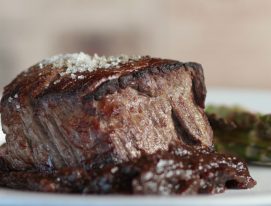Unthinkable just a few years ago, new wine trends in Argentina are coming together to produce styles that are proving ever more interesting to sommeliers and curious consumers.
Matías Prezioso, President of the Asociación Argentina de Sommeliers, shares some predictions for 2020.
Which are the latest wine trends in Argentina?
Wines from genuinely cold climates
For some time now, Argentine producers have been exploring cooler regions in an effort to produce fresher wines. These include the higher parts of the Uco Valley in Mendoza, Alto Valle in Rio Negro, Patagonia, and the Atlantic coast. Wineries are also experimenting with earlier harvest times to avoid the over-ripeness seen in previous vintages.
The Patagonian province of Chubut is playing a major role in these efforts. Its vineyards, most of which are located at at least 42 degrees south, are the most southerly in the country. Capitán Sarmiento, at 45° south, possesses 50 hectares of organic vineyards, making it the most southerly wine outpost in the world.

The area possesses micro-climates that share more similarities with Burgundy or Mosel than Mendoza or Salta and lend great freshness to their Chardonnays and Rieslings. Extremely elegant Pinot Noirs and Merlots are also being produced here.
Light reds
The search for refinement and freshness has led Argentine producers to turn to grapes such as Pinot Noir in the Uco Valley and Patagonia. With more than 2000 planted hectares, Pinot is playing a major role in high class Argentine wine with its subtle aromas, flowing texture and balanced acidity.
Garnacha (an example of the new wine trends in Argentina) is also gaining ground and ambitious, flavoursome wines are being produced from the grape in both Salta and Mendoza. Other light wines are being produced using Carignan and Bequignol, carbonic maceration technique and the unusual Patagonian trousseau.
Historic grapes
Historically used with a focus on quantity rather than quality, the family of Criolla grapes is rising from the ashes and becoming one of the latest wine trends in Argentina. Criolla Chica, also known as Listán Prieto, Misión or País, has been planted across 359 hectares and stands out for its unique, fresh and light flavours in Mendoza and across the country.
The rise of white wines
The image of Argentina as a country that only produces reds is now receding into the past. Argentine whites are proving to be a great success.
Among Chardonnays, the creamy, smoky Californian style has given way to wines with subtle aromas, well-defined acidity and an austerity reminiscent of white Burgundies. Semillon has a long history in Argentina and several producers are trusting in older vineyards for their varietals and blends. Chenin Blanc and the Rhone triumvirate (Roussanne, Marsanne and Viognier) are just a few of the other white grapes that promise much in the not so distant future.

Organic and biodynamic
In just five years, the number of organic certifications awarded in Argentina has grown by 50%, reaching 170 vineyards and 60 wineries. 5000 hectares are now certified as organic (70% of them in Mendoza), 3% of the global total.
Soaring demand for organically produced wine in Europe, the USA and Japan has driven growth in the technique in recent years. Wineries of all different shapes and sizes have committed to several different forms of long-term organic project.
When it comes to biodynamic certification, the first Argentine vineyard was approved by Demeter back in 2007 and now ten producers are certified, evidence of the progressive growth of the approach.
Orange wines and more
Argentina is also looking into other underexplored styles. Orange wines lend themselves well to aromatic varietals such as Torrontés and Malvasia, while both whites and reds are being made in clay and cement amphora. Moving into even more exotic territory, we find the Pet-Nats, which are being produced this year by a large number of different labels.
Photography: Ernesto Catena Vineyards



